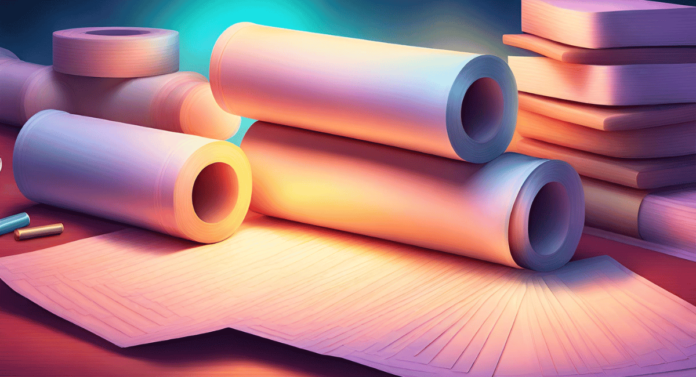A comprehensive bill of materials (BoM) is a critical inventory management tool for retailers in Singapore. It provides a detailed materials list and breakdown of components necessary for manufacturing and assembly processes. Effective BoM management is essential for optimizing production, streamlining procurement, and ensuring efficient resource allocation.
With the evolution of digital systems and advanced BoM software, retailers now have access to enhanced precision and optimization in inventory management. Implementing a well-structured BoM in a retail environment offers strategic advantages, such as comprehensive documentation, transparent cost analysis, and efficient resource management.
By utilizing a BoM, retailers can achieve enhanced efficiency, cost optimization, and operational excellence. It forms the backbone of inventory management, facilitating accurate cost analysis, stock level management, and streamlined production processes.
In this article, we will explore the significance of the Bill of Materials (BoM) in retail operations and provide expert insights on its implementation. You will also learn about best practices and common misconceptions surrounding BoM management. By optimizing your Bill of Materials management, you can drive operational efficiency in your retail operations and achieve success in the competitive Singapore market.
Key Takeaways
|
Table of Content:
Table of Content
What is a Bill of Materials (BoM)?
A Bill of Materials (BoM) is a crucial inventory management tool used in the retail industry. It provides a comprehensive outline of all the components, parts, and raw materials required for the production and assembly of a product. By creating a detailed roadmap, a BoM enables retailers to efficiently manage their resources and optimize the production process.
When retailers have a well-structured BoM, they gain clarity and precision in the production process. The BoM provides a clear list of all the components and materials needed, ensuring that nothing is overlooked. This comprehensive understanding allows retailers to accurately determine the budget, leading to informed decision-making about pricing and profitability.
Furthermore, a BoM plays a crucial role in facilitating smooth inventory management. By delineating the exact requirements, retailers can minimize wastage and ensure efficient resource allocation. This enhances operational efficiency, ultimately leading to improved productivity and cost optimization.
The Significance of Bill of Materials (BoM) in Retail
The Bill of Materials (BoM) holds immense significance in the retail sector, playing a crucial role in efficient inventory management, procurement, and cost analysis. By providing a comprehensive overview of all the components and materials required for production and assembly, BoM allows retailers to streamline their procurement process and ensure optimal stock levels.
With a well-structured BoM, retailers can gain clarity on the resources needed for production and make informed decisions regarding inventory management. By optimizing their stock levels based on the BoM, retailers can minimize excess inventory and reduce the risk of stockouts. This enables them to meet customer demand promptly while avoiding overstocking, enhancing their operational efficiency.
Furthermore, BoM plays a vital role in cost analysis, allowing retailers to accurately calculate the cost of production. By considering all the components, parts, and raw materials outlined in the BoM, retailers can determine the true cost associated with each product. This insight enables them to make informed pricing decisions, ensuring profitability while remaining competitive in the market.
Moreover, BoM facilitates smooth production and assembly processes by providing a detailed roadmap. With a clear breakdown of the required components and materials, retailers can manage their resources efficiently, minimize wastage, and ensure quality in the production process.
In summary, the Bill of Materials (BoM) plays a fundamental role in retail operations, contributing to effective inventory management, streamlined procurement, accurate cost analysis, and optimized production and assembly processes. By implementing and leveraging the BoM, retailers can enhance their operational efficiency, reduce costs, and achieve success in the competitive retail landscape.
How Bill of Materials (BoM) Works in Retail
In a retail environment, a well-structured Bill of Materials (BoM) operates as a strategic tool. BoM provides comprehensive documentation by outlining all the components and materials required for production and assembly. It ensures clarity and precision in the production process, enabling retailers to manage resources efficiently.
The BoM serves as a roadmap for retailers, guiding them through the entire production and assembly process. By detailing the specific components and materials needed for each product, BoM eliminates ambiguity and ensures that retailers have a clear understanding of the resources required.
Furthermore, BoM facilitates transparent cost analysis in the retail industry. It allows retailers to accurately calculate the cost of production by considering the price of each component and material. With transparent cost analysis, retailers can make informed decisions about pricing and profitability.
Efficient resource management is another key benefit of implementing BoM in retail operations. By delineating the exact requirements for each product, BoM helps retailers optimize resource allocation and minimize wastage. This leads to enhanced operational efficiency in inventory management, ensuring that the right quantity of components and materials is available when needed.
Overall, a well-implemented BoM system provides retailers with comprehensive documentation, transparent cost analysis, and efficient resource management. It enables retailers to streamline their production and assembly processes, resulting in enhanced efficiency and cost optimization.
Common Misconceptions about Bill of Materials (BoM)
When it comes to the Bill of Materials (BoM) in the retail sector, there are common misconceptions that need to be clarified. One prevalent misconception is that BoM is solely a costing tool. However, BoM is much more than that; it is a holistic inventory management tool that encompasses various aspects of production and assembly. While BoM is vital in manufacturing, it also holds great relevance in the retail industry for effective inventory management and stock replenishment.
BoM goes beyond just cost analysis and plays a pivotal role in streamlining inventory management processes and optimizing resource allocation. By having a well-structured BoM, retailers can achieve effective inventory management, ensuring the availability of the right components and materials at the right time. This enables seamless stock replenishment, reducing the risk of shortages or excess inventory. With BoM, retailers can effectively manage their manufacturing processes, enhance operational efficiency, and meet customer demands with precision.
Implementing BoM in the retail sector empowers businesses to streamline their inventory management processes and enhance overall operational efficiency. By dispelling common misconceptions and understanding the true potential of BoM, retailers can leverage this powerful tool to drive success in today’s competitive retail landscape.
You can also check out additional articles on what is bill of materials that offer comprehensive guidance and examples about BoM.
Benchmarks and Examples from Top Retail Companies
Several leading retail companies in Singapore have harnessed the power of the Bill of Materials (BoM) to optimize their production processes and achieve remarkable operational efficiency. These companies have meticulously documented all the components and materials required for their diverse range of products, allowing them to forecast demand accurately, manage inventory with precision, and showcase exemplary performance in the retail industry.
By implementing BoM, these top retail companies have experienced a significant impact on their inventory management and production processes, resulting in enhanced operational efficiency. BoM has enabled them to streamline their inventory, reduce wastage, and minimize production disruptions. With a clear understanding of the component requirements, these companies have been able to optimize their production schedules and respond quickly to changes in customer demand.
One such example is Company X, a leading electronics retailer in Singapore. Company X utilizes BoM to effectively manage their inventory and production processes. By maintaining an accurate and up-to-date BoM, Company X can easily track the availability of components, ensure timely procurement, and streamline their production operations. As a result, Company X has achieved remarkable operational efficiency and has become a market leader in the retail industry.
Expert Quotes on Bill of Materials (BoM)
In the retail industry, experts recognize the pivotal role of the Bill of Materials (BoM) in optimizing retail operations. BoM is an indispensable tool for resource management and cost optimization, providing invaluable insights for retailers. Proper utilization of BoM empowers retailers to achieve operational excellence through meticulous inventory management and cost optimization.
Image: Retail operations rely on effective resource management to achieve operational excellence.
According to Dr. Jane Lee, a renowned retail expert, “Bill of Materials is the backbone of efficient resource management in retail. It enables retailers to have a clear understanding of the components and materials required for production, allowing for strategic allocation and optimization of resources.”
James Wong, a seasoned retail operations manager, emphasizes the significance of BoM, stating that “Bill of Materials serves as a strategic tool for cost optimization in retail. By accurately documenting all the components and their associated costs, retailers can make informed decisions about pricing, profitability, and production planning.”
Optimizing retail operations is a top priority for any successful retailer. BoM, when leveraged effectively, can provide the necessary framework for resource management and cost optimization, driving operational excellence in the retail industry.
Step-by-Step Guide: Implementing BoM for Enhanced Retail Operations
Implementing the Bill of Materials (BoM) in your retail operations is a strategic process that can significantly enhance your operational efficiency. To successfully implement BoM, follow this step-by-step guide:
Understand your product portfolio
Start by gaining a comprehensive understanding of your product portfolio. Analyze the components and materials required for each product, ensuring you have a clear picture of your resource needs and specifications.
Select the right BoM software
Choose the BoM software that best fits your unique retail needs. Look for software that provides robust inventory management features, seamless integration with other business systems, and comprehensive documentation capabilities.
Collaborate with cross-functional teams
Collaboration with cross-functional teams, such as production, procurement, and finance, is crucial for seamless integration of BoM. Involve these teams throughout the implementation process to ensure a holistic approach and effective resource allocation.
Maintain and update your BoM
Regular maintenance and updates of your BoM are essential to align with evolving product specifications and market demands. Keep your BoM accurate and up-to-date by regularly reviewing and revising component information.
Train and adopt BoM among retail teams
The successful implementation of BoM relies on training and adoption throughout your retail teams. Provide comprehensive training to employees on how to effectively utilize the BoM in their daily operations, emphasizing the benefits it brings to inventory management and resource allocation.
By following this step-by-step guide, you can implement the Bill of Materials (BoM) in your retail operations, leading to enhanced operational efficiency, optimized inventory management, and improved resource allocation.
Do’s and Don’ts of Bill of Materials (BoM) Implementation
When implementing the Bill of Materials (BoM) in your retail operations, it’s crucial to keep in mind a few essential guidelines. By following these do’s and don’ts, you can ensure a successful BoM implementation that improves your inventory management, cost analysis, and decision-making processes.
Do invest in advanced BoM software
Investing in advanced BoM software is a crucial step in streamlining the implementation process. Choose a software solution that suits your retail operations, providing features such as comprehensive documentation, seamless integration with other systems, and efficient resource management. By leveraging cutting-edge BoM software, you can optimize your inventory management and enhance operational efficiency.
Do regularly update and maintain your BoM
Regular updates and maintenance are vital to ensure the accuracy and relevance of your BoM. As your retail operations evolve, product specifications change, and market demands shift, it’s important to keep your BoM up to date. Regularly review and revise your BoM to reflect these changes, ensuring that you always have the most accurate and reliable information for effective decision-making.
Do encourage cross-departmental collaboration
Effective BoM implementation requires cross-departmental collaboration. Encourage communication and collaboration among teams such as production, procurement, and finance to ensure the seamless integration of BoM into your retail operations. By fostering collaboration, you can optimize resource allocation, streamline processes, and improve overall efficiency.
Don’t rely solely on manual processes for BoM management
Avoid relying solely on manual processes for BoM management, as this can lead to errors and inefficiencies. Manual management of BoM increases the risk of inaccuracies, delays, and miscommunications. Instead, leverage advanced BoM software that automates the process, reducing human error and improving overall efficiency in your retail operations.
Don’t overcomplicate the BoM structure
While it’s essential to include all necessary details in your BoM, avoid overcomplicating its structure without practical justification. Maintain a clear and organized format to ensure easy navigation and understanding. Simplify the BoM structure to focus on the key components, while still providing sufficient information for inventory management and cost analysis.
Don’t underestimate accurate component specifications
Accurate component specifications are crucial for effective inventory management and cost analysis. Inaccurate or incomplete component specifications can lead to delays, production errors, and increased costs. Ensure that your BoM includes detailed and accurate information about each component, including part numbers, manufacturer names, and descriptions. This ensures that you can make informed decisions about procurement, stock levels, and pricing.
By following these do’s and don’ts, you can ensure a successful implementation of the Bill of Materials (BoM) in your retail operations. Maximize the benefits of BoM, such as improved inventory management, efficient resource allocation, and informed decision-making, to enhance the overall efficiency and profitability of your retail business.
Best Practices for Bill of Materials Management
To ensure effective bill of materials (BoM) management, it is important to follow several best practices. By implementing these practices, you can optimize your inventory management and streamline your production processes, leading to improved operational efficiency and cost savings.
Tailor the BoM to the specific needs of your project or build. Use a standardized template to maintain consistency across your organization. This will ensure that everyone involved in the process understands the structure and format of the BoM, making it easier to navigate and update.
Include the right amount of detail in the BoM. This includes relevant information such as part numbers, manufacturer names, part names and descriptions, quantities, procurement types, priority analysis, alternate parts, part levels, file availability, revision levels, and comments. By including these data points, you can provide a comprehensive overview of the components and materials required for production and assembly.
Double-check the information in the BoM before sharing or uploading it. Accuracy is crucial to avoid any potential errors or delays in the production process. Take the time to review the BoM and ensure that all the details are correct, and make any necessary updates or corrections before it is shared with your team.
Track changes made to the BoM to maintain a clear record of revisions. This will help you keep track of any modifications or updates made to the BoM, providing a history of changes and allowing you to easily reference previous versions if needed.
Limit access to editing the BoM to reduce the risk of errors. By granting editing access only to authorized personnel, you can prevent unauthorized changes or accidental modifications that can disrupt the production process. This will help maintain the integrity and accuracy of the BoM.
Consider automating BoM management processes to enhance efficiency and accuracy. Utilize BoM management software or tools that can automate data entry, calculations, and version control. This can save time and reduce the likelihood of manual errors, allowing you to focus on other critical tasks.
Following these best practices will enable you to effectively manage your bill of materials, optimize your inventory management, and ensure accurate and efficient production processes. By customizing your BoM, including necessary details, and automating the management process, you can achieve enhanced operational efficiency and cost savings in your retail operations.
How Bill of Materials (BoM) Can Improve Planning with Precision
Accurately predicting forecasted demand and managing component requirements are central challenges for supply chain professionals. The Bill of Materials (BoM) plays a crucial role in planning with precision by considering the demand for each level of the BoM. BoM forecasting requires anticipating the needs of multiple components to assemble the final product, which adds complexity to the forecasting process.
Managing components within the BoM helps prevent production disruptions caused by variability in delivery times and reduces the risk of excess inventory. By having a clear understanding of component requirements, retailers can ensure timely procurement of necessary parts, avoiding delays or bottlenecks in the production process. Additionally, BoM enables accurate forecasting of component demand, facilitating efficient inventory management and avoiding the accumulation of unnecessary stock.
To further optimize planning, retailers can automate BoM processes. With the help of advanced BoM software, retailers can streamline planning activities, improve accuracy, and enhance overall efficiency. Automated BoM processes enable real-time visibility into component availability and demand, allowing supply chain professionals to make informed decisions regarding production schedules, procurement, and resource allocation.
Conclusion
In conclusion, the Bill of Materials (BoM) serves as a cornerstone for operational excellence in the retail sector of Singapore. By providing comprehensive documentation and facilitating transparent cost analysis, BoM empowers retailers to optimize their production processes and achieve strategic advantages in the competitive market. Retailers also can enhanced precision and efficiency in inventory management, driving success in Singapore’s dynamic retail landscape.
With HashMicro’s Retail Solution, retailers can increase precision and efficiency in inventory management, positioning themselves for success in Singapore’s dynamic retail landscape. Using HashMicro’s Retail management software, you can streamline operations, cut costs and seamlessly meet the evolving demands of their customers, paving the way for sustainable growth and unparalleled competitiveness in the retail sector.
Get a free demo now with HashMicro to improve your company’s efficiency!


























































